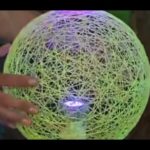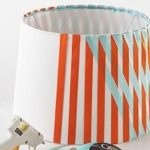DIY lampshade for floor lamp
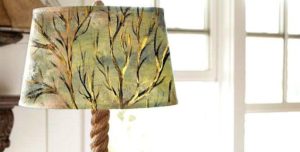 If you want to change the decor or design of the room, you need to start with the little things. One of these is a lampshade for a floor lamp. Using scrap materials you can make your apartment more beautiful.
If you want to change the decor or design of the room, you need to start with the little things. One of these is a lampshade for a floor lamp. Using scrap materials you can make your apartment more beautiful.
The content of the article
What can you use to make a lampshade for a floor lamp?
There are a huge number of materials that can be used as the basis for a lampshade. Among them:
- Paper or cardboard. These materials are cheap and easy to process. Color and density may vary. The frame, which is wrapped in paper, can already be used as a lampshade, but it should be decorated. It will be beautiful if you make various holes in the paper (for example, butterflies or animals). You can make a composition including several colors at the same time.
- You can decorate the lampshade with cupcake baking paper. This paper already has a beautiful shape. You need to take one mold, open it, spread glue inside, and add another one in a more closed form. Such decorations must be placed as close to each other as possible. The light will be soft and dim.
- Fabric based lampshade. The density of the fabric depends on how bright the light we need. The denser the fabric, the softer the light becomes. You can choose fabric of various colors and shades. Once the fabric has been chosen, you need to make a pattern. Carefully hem the edges of the fabric and attach it to the frame with glue.
- Plastic.Thanks to this material, you can create a product of any type, shape and color. You can take this material from household items (bottles, plastic cups, straws or disposable cutlery). Colored plastic is used if you need to cut out small decorative items. For example, we can cut out butterflies, leaves or animals and glue them to the frame. If we come across a transparent material, it can always be coated with varnish or paint.
- Gypsum. Lampshades made of plaster are rarely used. It's very easy to create them. We need the following: a base for forming the lampshade, a plaster mixture, water and a bandage. The work process is similar to papier-mâché, only instead of paper we will use bandages soaked in a plaster mixture. If, after drying, the surface is uneven, unnecessary plaster is sanded using sandpaper.
- Lamp made of beads and flowers. The process of creating such a lampshade is more difficult and will take a lot of time, but the result will be a truly beautiful design. First you need to cover the frame with cardboard. Flowers and beads are glued to it.
- Knitted lampshade. You can knit the structure yourself. You will need knitting needles and thread. It is necessary to determine the required size in advance. And if you have no experience in knitting, an old sweater will do as a base. Knitting a lampshade will take a lot of time, but this design looks unusual.
- You can glue old or broken hangers together.
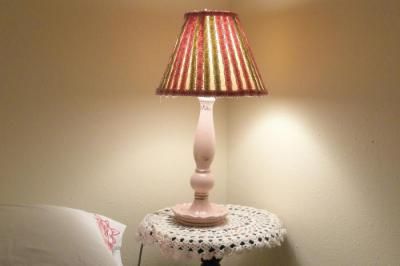
It is not necessary to make the cover from the same fabric. You can cut out several pieces of fabric of different colors and densities and sew them together. You can also embroider a beautiful image using a needle and thread.
Note! Paper is not a durable material, but if you get tired of it, you can replace it over time.
What you need to create a lampshade
To create a lampshade you need the following materials and tools:
- Marker for marking.
- Iron, if you plan to use a fabric-based lampshade.
- Textile.
- Pins.
- Threads.
- Glue.
- Paper.
Important points and nuances when working
There are several important points to pay attention to when creating a lampshade:
- Its location. There are several types of lampshade, depending on the location: ceiling, table lamp, attached to the wall and floor (with a leg installed). The type should be selected depending on the application. For example, if we need to illuminate a large room, a ceiling structure is best, and for sewing work, a table lamp or a lamp attached to the wall.
- Size. The smaller the size of the material, the more it is needed to create a lampshade. For example, to create a lampshade you need one meter of fabric or a huge amount of beads.
- Purpose. The floor lamp is not the main source of light, but a piece of decoration. Its goal is to create a cozy and romantic environment. If we need more light, we should choose materials with a minimum density.
- Price. The price of some materials for creating a structure is higher than the price of a finished lampshade. For example, velvet is considered a very expensive material, and such a design will be expensive.
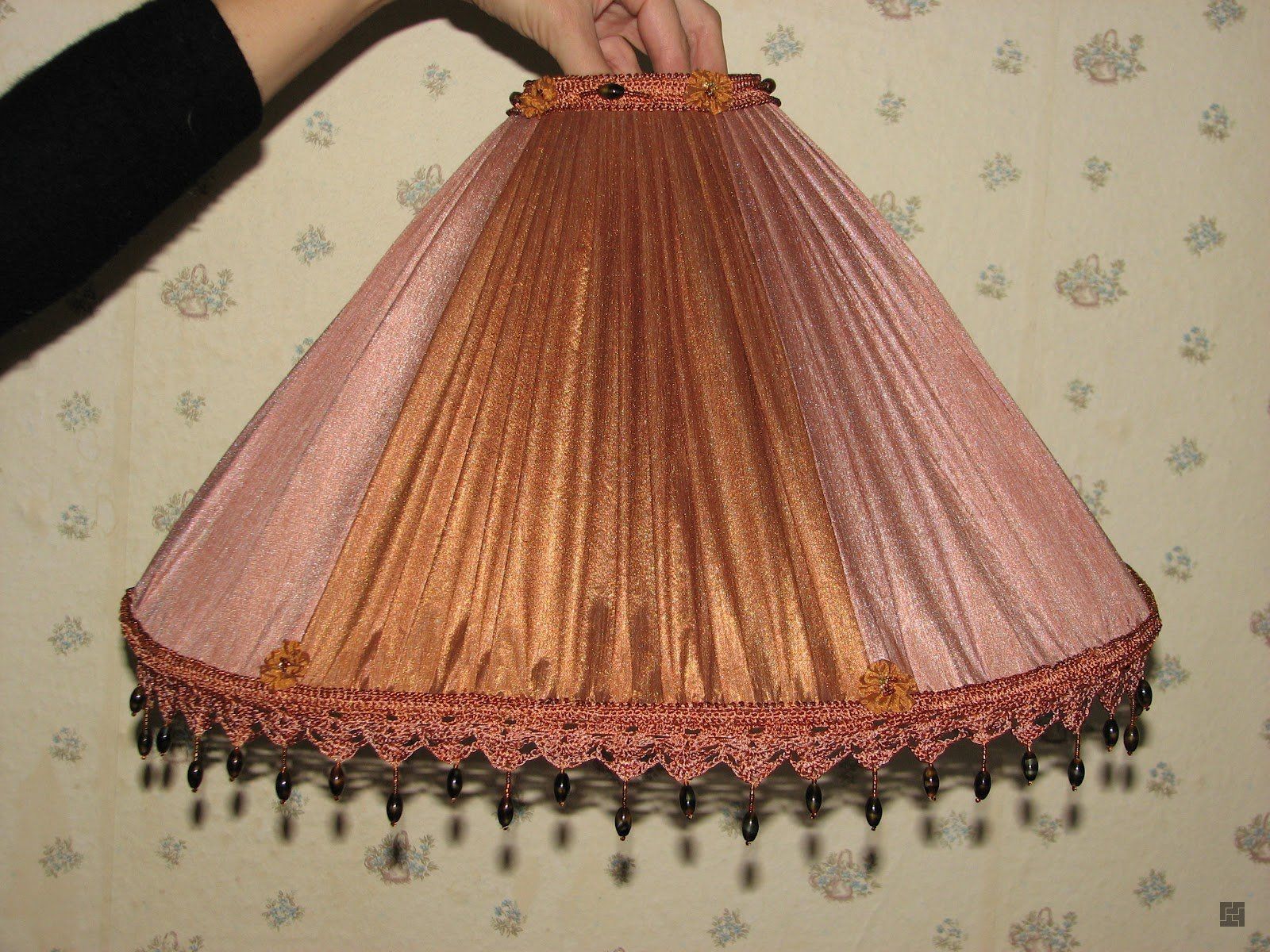
Lampshade for floor lamp: step by step
The process of creating a structure with your own hands differs, depending on the chosen material. We chose fabric as the base.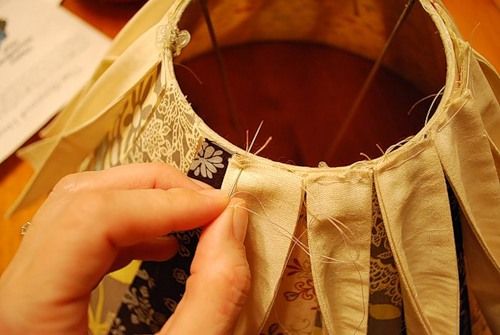
Creating a lampshade with your own hands consists of the following steps:
- First we need a frame. An old lamp base works well. If you don't have old frames, you can buy an inexpensive, used lamp. You can also use a basket as a base.The frame is processed as desired.
- Making a template. According to it, we cut the fabric.
- We have 2 ways to create a template. It all depends on the shape of the frame. For example, if it is in the shape of a cylinder, you need to measure the circumference and draw one line on the fabric. Then the height is measured and a second line is drawn. Now you need to draw the 2 remaining sides of the square and cut out the blank.
- If the shape is a cone, you need to spread the paper on the table. Now take a pencil and roll the base over the paper. According to this, we mark the lines along which its sides pass. It is necessary for the frame to make one full circle. Mark the point from which the calculations began. Now we connect the lines and cut out the template.
- We cut out a piece of material the size of which is equal to the size of the cut out template. If the fabric is too big or small, it means we made an error in the measuring process. In the first case, we simply cut off the excess, but in the latter, we will have to redo everything.
- Now we fasten the template and fabric. If there are drawings on the material, the template is laid so that they look in the direction we need.
- The template is applied to the outside of the fabric and secured with pins. Now we trace the template relative to the contour. If a dark fabric was chosen, soap or chalk are suitable for marking.
- Now allowances are drawn. Draw lines 2 cm from the edge of the template.
- We remove the pins one by one. The allowances must be folded inside. The folds are fixed with pins.
- We remove the template and prepare the sewing machine. The color of the thread is the same as that of the fabric.
- We process the received element on the machine. We do this on three sides (one remains untouched, since we will need to create a seam on the frame). Sew at a distance of about 5 mm from the edge. We process the cuts.
- Now we need to smooth out the uneven parts of the fabric. An iron is used for this. If we leave the fabric ironed, it will not be able to fully adhere to the base, and the lampshade will look bad.
- Now we are preparing to glue the fabric. To do this, prepare a work surface by covering it with paper. Lay out the fabric and apply glue to it. Glue it to the frame.
- The next step is processing the seams and cuts. The lampshade should be covered with a stitched edge.
- The lampshade is ready. It can be used.

There are several dozen different ideas for creating a lampshade. You should choose based on the cost of materials, as well as the time you spend on manufacturing.


